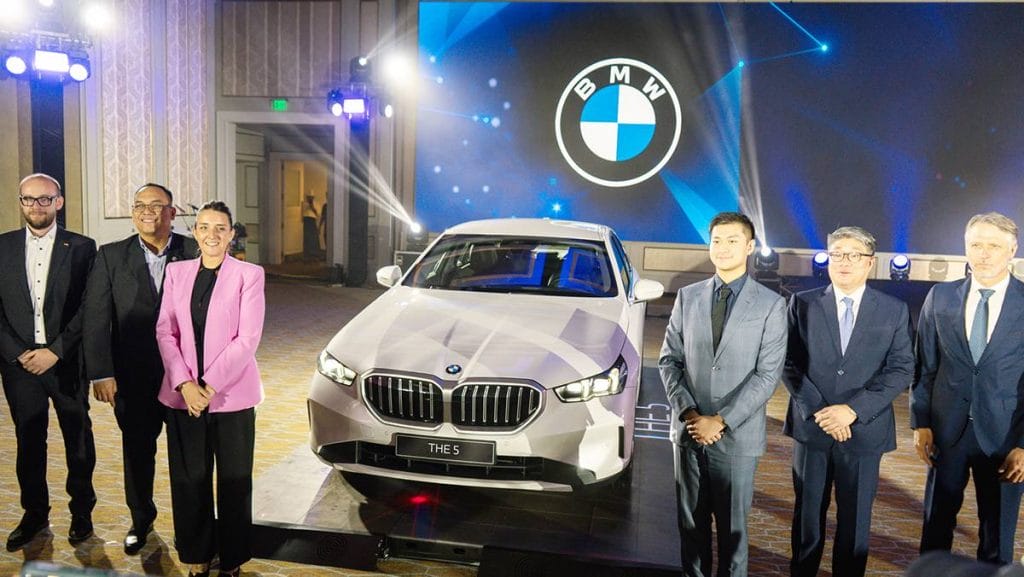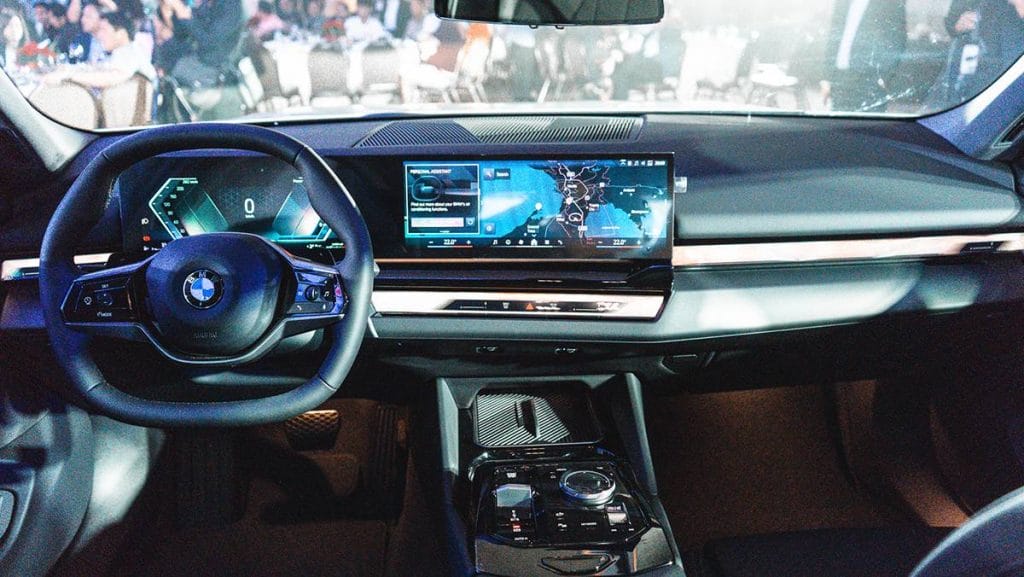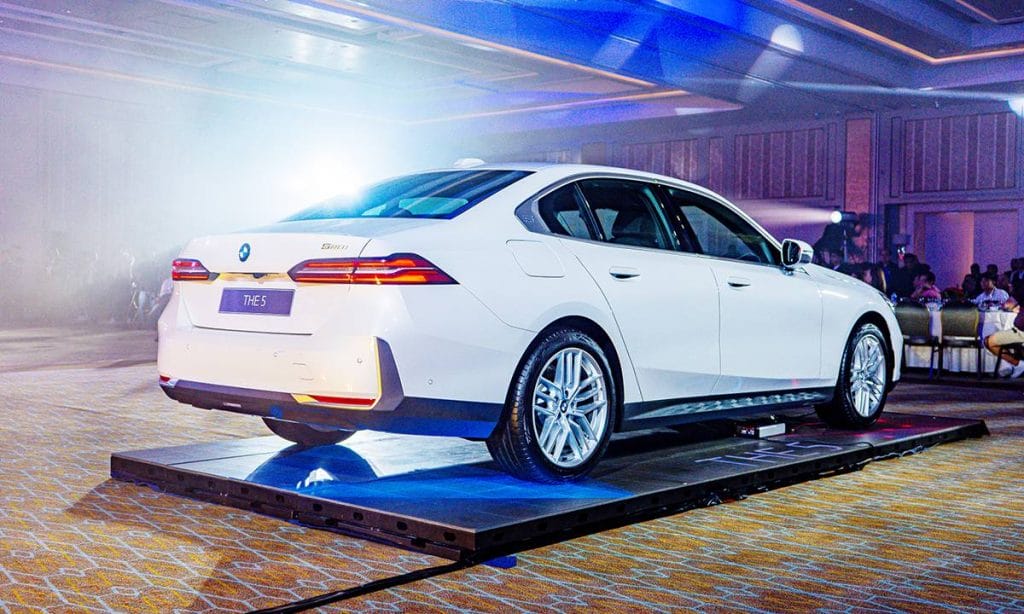After seven full generations of its popular midsize executive sedan, BMW gives its 5 Series a thorough makeover – dare I say reimagination – in and out.
To be clear, the eighth-generation BMW reflects the evolutionary changes of the entire portfolio’s look which, in turn, are a function of the developments both in the brand and in the industry in general.
The 5 in both electric and ICE (internal combustion engine) guises are nearly identical in look, an ethos–which continues from the models like the X3 and the recently (locally) launched i4 – whose platforms accommodate whatever powertrain (electric, electrified, or ICE) is chosen for a model.

Last week, SMC Asia Car Distributors Corporation, official importer and distributor of BMW in the Philippines, unveiled the all-new 5 Series which, it said in a release, “follows the modern blueprint of what a mid-size executive luxury sedan should be – embracing the future in internal combustion engines and electric mobility.”
Two iterations of the 5 make their way here, the ICE-powered BMW 520i (selling for P4.99 million) and the battery electric BMW i5 eDrive40 (priced at P5.79 million). “One represents progress, the other represents sustainability,” declared San Miguel Corporation’s Jacob Ang in a speech ahead of the unveiling in Makati City.

The 520i is a mild hybrid – powered by a four-cylinder, 2.0-liter gas engine supplemented with a 48V starter-generator. Drivers have 208hp and 330Nm on tap, a healthy bump in output when compared to the previous generation’s example with a similar engine displacement (181hp and 290Nm). BMW claims a zero-to-100kph time of 7.5 seconds on the way to a 230kph top speed.
Meanwhile, the all-electric variant of the 5 delivers 340hp and 430Nm, and a peak range of 582km. Its standstill-to-100kph time is six seconds, with a maximum rate of 193kph.

A “modern interpretation” of BMW’s twin headlights flank the iconic kidney grille, with LED elements “arranged almost vertically” and function as turn indicators and daytime driving lights. The grille gets a wide surround and so-called Iconic Glow lighting.
The front fascia is more sharply sculpted, and the sedan features a higher shoulder line and “two precisely traced character lines.” Black side skirts, flush-mounted door handles, and an embossed “5” on the C-pillar’s matte-silver portion are other key aesthetic touches.
Arguably more distinctive in this generation of the 5 Series are vastly changed hindquarters – marked by slim, horizontal tail lights that grow in size upon reaching the sides of the vehicle. This is an attempt to reflect the hallmark L-shape.
The 520i rolls on silver, 19-inch Triplex spoke 933 light alloys; the BMW i5 eDrive40 is fitted with duo-tone, gray 19-inch aerodynamic wheels. Both 5 models are available in the following exterior colors: Mineral White, Black Sapphire, Cape York Green, Oxide Grey, Phytonic Blue, and Sophisto Grey.
Consistent with BMW’s push for sustainability, the 5 is the brand’s first model to feature a “fully vegan” interior. Called Veganza, “this includes the surfaces of the newly designed sports seats, the dashboard, and the door panels, as well as the steering wheel,” said the company.
There’s a stylistic, reductive push as well – reflected in significantly fewer buttons inside. Replacing many of the physical controls are digitized functions, done through the large BMW Widescreen, which consists of a 12.3-inch information display and a 14.9-inch control display. A 12-speaker, 205W Harmon Kardon speaker system is common to both models.
The 5 also levels up in tech through a standard BMW Live Cockpit Plus with a new BMW Operating System 8.5, along with “a host of extra digital services” and the BMW Intelligent Personal Assistant. The Smartphone Integration function now works with both Apple CarPlay and Android Auto. Lastly, BMW ConnectedDrive “provides an elevated level of connectivity and convenience for drivers.”
BMW Philippines said both models come with a five-year comprehensive BMW Warranty. The BMW i5 eDrive40 additionally gets a six-year BMW Service Inclusive package, an eight-year high-voltage battery warranty, and a BMW Wallbox charger that is to be installed by a BMW “i-partner” in the customer’s home.
Velocity asked BMW Philippines President Spencer Yu about the market reception to the brand’s steadily growing number of all-electric choices here. “The models have been gaining a lot of traction,” he began. “The reception has been good. It’s not the greatest, but it’s been good. I think Filipinos are slowly coming to accept this. With the economy and the world opening up over the last two years, they’ve been able to travel. And when you’re able to travel, these things are normal. Seeing a charging station in Germany is like seeing a 7-11; it’s all over the place.”
Interestingly, BMW opted for the i5 over the plug-in hybrid version of the 5. Yu extolled the virtues of the all-electric version – particularly its torque on demand, and its quiet operation.
Of course, there are practical considerations as well – namely tax relief afforded by TRAIN (Tax Reform for Acceleration and Inclusion) and other fiscal and non-fiscal incentives from EVIDA (Electric Vehicle Industry Development Act). These are most felt and realized in pure-electric vehicles, such as the i5. It basically makes more sense to go all-electric.
“I have customers who’ve fully transitioned to electric, and the percentage of electric cars as part of our overall sales is slowly growing. The supply is starting to stabilize already, and you’ll see more of them in the coming years,” concluded Yu.

